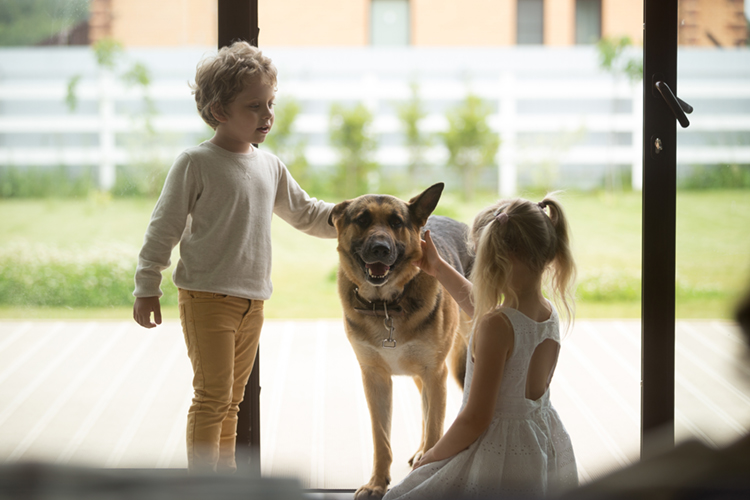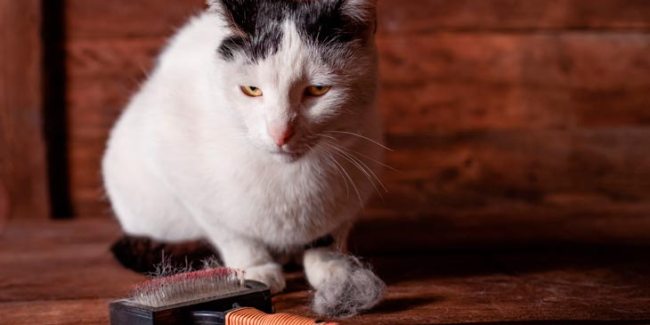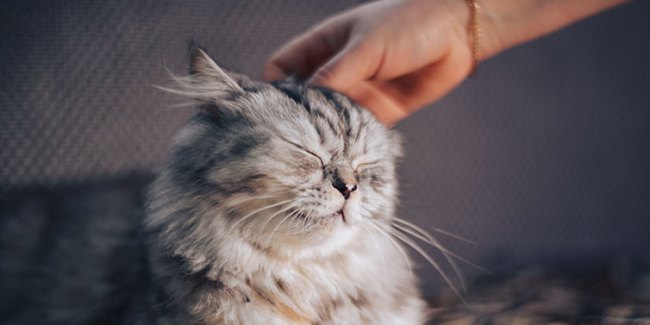Furry Friends and Tiny Tots
Many of us have happy memories of our childhoods, when we were often accompanied by a furry friend. If we look back on family photographs and videos, pets feature so often, as they played a big part in so many of our joyful memories.

We remember Jackson, the Lab/Ridgeback cross, enjoying the garden water spray with us on hot summer days; we remember Sake, the Siamese, who reluctantly put up with our attempts to dress her in dolls’ clothes until she escaped to a tree; we remember Dobbie, the Maltese, who was always game for a ramble, even with arthritic legs.
Children love their pets – understandably, because research has found that quite apart from the joys of growing up with them, there are many other wide-ranging benefits of bringing your children up with animals, which include physical, emotional, social and cognitive development. Yes, having pets can help your child’s brain to grow!
Let’s have a look at some of the benefits of having pets to our little munchkins, which are backed up by research, according to pediatricians, educational experts and scientists.
Keeping Kids Healthy
Yes, can you believe it? A study by Dr Denis Ownby, a pediatrician and head of the Allergy and Immunology department of the Medical College of Georgia in the USA, in a study, found that having pets actually decreases children’s risk of developing allergies. He followed a group of 474 babies from birth up to seven years of age. He discovered that those kids who had two or more dogs or cats in their homes were less than half as likely to develop certain allergies as kids who had no pets in their homes. Yes, HALF as likely! Those with pets developed less allergies to outdoor allergens, like grass, and to dust-mite allergens found in the home. Another study found that children who grew up with pets had less risk of developing asthma.
How does this work? Dr Ownby believes that the bacteria which comes from a pet’s saliva – we know, gross! – during play with the animal, might change the way that the child’s immune system reacts to certain allergens. So pets’ spit, within reason of course, could be protective instead of dangerous.
Building Family Bonds

Try asking a small child to name the members of his/her family: “Mommy, Daddy, Robert (brother), Tiger (cat) and Bonzo (dog).” In fact, very often you may find that the animals come first on the list. Children see the family’s pets as part of the family. What they do not realise yet is that pets are often an essential part of family bonding. Unfortunately, family bonds in our 21st century, when children and parents devote so much of their time to social media, are not what they once were. How sad it is to watch a family, with each member silently glued to his/her cell phone, with no attempt to communicate with each other. What can parents do to strengthen those weakening bonds? Dr Melson, a professor of developmental studies at Purdue University in America, says that pets can help families grow stronger and closer.
How does this work? The family pet is often the focus of family activities. Going for a walk as a family with Bonzo, playing with him or with Tiger or taking part in Bonzo’s training, help to bring the family together. Not only do such activities take the kids away from their computer games, they bring the family together and help to make great memories.
Helping With Learning (Cognitive Benefits)
Professor Mary Renck Jalongo, a professor of education at Indiana State University in Pennsylvania, explains that teachers have been aware for a long time that bringing therapy animals into schools, helps children, especially those with special needs, to learn. Why is this? It’s very simple really: animals do not judge. If a child is ‘reading’ to a dog, the animal cannot say: “No, Simon. That’s wrong. You must try harder.” Educators are now finding that animals can help all children to learn.
If you listen to a child reading to his/her pet, you may notice that he/she involves the pet in the book. She/he may ask Tiger questions, point to certain words or pictures or comment on the story. Children like to have a ‘listener’ as they read: pets are perfect listeners as they never interrupt or criticize. They may even nod their heads or wag their tails when the story gets exciting! Dr Jalongo says that research has shown that when they are reading, kids are more relaxed when reading to their pet than when reading to an adult or even another child.
Educators will tell you that if children perceive reading as fun and relaxing, they will be more likely to read, thus developing this vital skill which impinges on their ability in every school subject. Stressed children struggle to learn.
Never mind the expensive extra lessons, get a family furry friend, who won’t mind listening to “The Little Engine That Could”, a hundred times.
Developing Empathy
Empathy, or caring for others, is not a quality we are born with. It has to be learnt. It develops throughout childhood and adolescence. You may see the odd flash of empathy in your 4-year-old, who perhaps hugs another child who is crying, but that same child may later laugh and mock another child who has fallen. In fact, psychologists tell us that the ability to empathise is a work-in-progress until the end of adolescence and even until the child is in his/her twenties. It is obviously a vital ability if your child is to develop into a kind and caring human being, but how do we encourage its development?
Caring relationships, copying empathetic adults, communication, playing, reading and listening to stories and … living with pets, can all help to develop this quality. In her research, Dr Melson found that, over a 24-hour period, kids with pets spent 10.3 minutes in care-giving, whereas kids without pets spent 2.4 minutes. She also explains that animal-nurturing is especially important for boys because they may grow up seeing empathy as a ‘girl-thing’. Encouraging the nurturing of an animal helps to create the idea that caring for others is important for both sexes.
Introducing Furries and Tiny Tots

How can you set the foundations for happy, respectful relationships between your little ones and pets?
To become ‘besties’, there are things you can do to make these relationships a positive experience for all involved.
- Preparation
Do your research. Find out which animal and which particular breed would be the best fit for your family. For example, Golden Retrievers and Ragdoll cats are generally friendly and gentle with children. Very small dogs like Chihuahuas and cats like Maine Coons may not be quite as affable and easygoing with small children. If you get your cat or dog from a breeder, preferably find one who brings the pups or kittens up in a home where there are children. Go and watch how these animal babies interact with the family – particularly with the children. If you are considering a rescue pup or kitty (and you should), the staff should be able to give you some insight into the background of the pet, whether a baby or an adult.
Remember: Some of the older animals at your local rescue centres are wonderful with small children. Check them out!
- Getting to Know You
Keep both pet and children as calm as possible.
If your children are old enough, prepare them by explaining that they mustn’t get too excited and that they should remain calm. (Good luck with that!) Try to have two adults present when introducing an often-scared pet to your children. One adult manages the dog, who should be on a leash, and the other manages the children. Keep your new pooch or kitty out of reach of the children at first and gradually bring them closer. Eventually, allow the children to gently pat and talk to the new arrival.
Keep any eye on poochie’s body language which may suggest that he/she is overly frightened or becoming aggressive. If this happens, retreat slowly and try again later. Above all, do not shout or punish either pet or children. Cats may take longer than pooches and will appreciate being in a separate room in the new house for a time, before being introduced to the family.
- Rules for Pets and Children
Both need to learn to respect each other. Children, in particular, must be taught that pets have feelings and that they are not toys to be grabbed by their tails. Show your kids how to pet the new cat or dog in order to avoid hurting the animal and also, very important, to avoid the animal retaliating with a scratch or a bite if the child hurts him/her. An animal who does this is defending itself and should not be punished. You should then explain carefully to your child why this happened and that Tiger or Bonzo did not do this deliberately. However, frequent, more serious scratches or bites might require a consultation with your vet for advice.
Your pet should have a ‘safe place’ to go to when he/she wants to ‘escape’ if the play becomes too rambunctious. This may be a pet travel container, a pet crate or a high place for a cat. Children should be taught that this is the pet’s place and they are not allowed into that space. This protects both child and animal.
- Watch Out for Any Problems
Older children, once they have shown that they have understood and are following the ‘rules’, and that your pet is comfortable with them, may eventually be left unattended, but any pet must never be left alone with babies or small children.
Always keep an eye open for signs of potential problems. For example, a stressed cat may crouch down and its ears may be flat against its head; a relaxed cat may roll onto its back or have an upright tail. A relaxed dog might have a slightly open mouth and their tail may be down; a stressed poochie may have upright hackles (hairs on its back) and the ears may be back. You should get to know these signs in your pet so that you can take steps to avoid any confrontations
And finally …
Always remember that if you are experiencing any problems, your vet and/or an animal behaviourist should be consulted for advice. It can often take some time before furry friend and tiny tot become comfortable in each other’s company, so do not panic if they do not bond straight away. We wish you and your family much joy in your relationship with your wonderful new pet.
Sources:
www.wisdompanel.com
www.parents.com
www.psychologytoday.com
ZA-XXXX
Subscribe to our Newsletter
Get to know your furry friend better! Sign up for all things dog- or cat-related.
The Hairy Facts about the dreaded hairball
12 April 2021
Help! My dog’s barking mad! Volume 2
12 April 2021
Your Itchy, Scratchy Cat – All About Cat Skin Problems
12 April 2021
The Dog’s Diet: A Bone of contention?
01 April 2021
Mango Fly Worms: How to Spot and Eliminate them
Posted on November 28,2019
Managing Mange And Mites In Your Dog
Posted on June 11,2018
Why Do Cats Purr and How? Learn What Your Cat Is Saying
Posted on October 14,2020
How to Get Rid of Ear Mites in Dogs
Posted on November 06,2019









